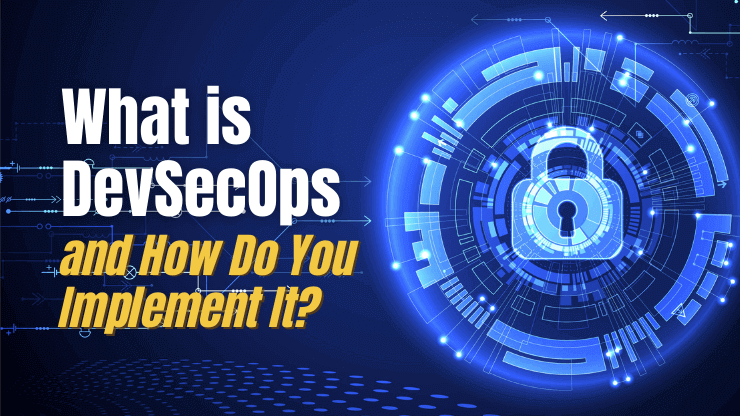
DevSecOps is an extension of the DevOps philosophy that integrates security practices into the entire software development lifecycle. It aims to ensure that security considerations are not an afterthought but are incorporated from the very beginning of the development process, all the way through deployment and operations. DevSecOps emphasizes collaboration between operations, development, and security teams to generate a culture of shared responsibility for security.
The “Sec” in DevSecOps stands for security, highlighting the importance of including security measures and practices throughout the entire development and deployment pipeline.
Key Aspects of DevSecOps:
- Shift Left: DevSecOps encourages a “shift left” approach, which means addressing security issues early in the development process rather than waiting until later stages.
- Automation: Similar to DevOps, DevSecOps employs automation to integrate security checks, vulnerability scanning, and compliance assessments into the development pipeline.
- Continuous Security: DevSecOps promotes continuous security testing, monitoring, and feedback to ensure that security remains a priority throughout the software lifecycle.
- Collaboration: DevSecOps fosters collaboration between development, operations, and security teams to address security concerns collectively and efficiently.
- Security as Code: DevSecOps integrates security practices into code development and infrastructure provisioning, treating security measures as integral components.
Why Do We Need DevSecOps?
- Proactive Security: DevSecOps allows organizations to identify and address security vulnerabilities early in the development process, reducing the risk of security breaches and data leaks.
- Risk Mitigation: By integrating security practices into development and operations, DevSecOps helps mitigate risks associated with cyberattacks and unauthorized access.
- Faster Remediation: DevSecOps enables quicker identification and remediation of security issues, leading to faster response times in addressing vulnerabilities.
- Compliance and Regulations: DevSecOps ensures that applications and systems meet compliance and regulatory requirements, avoiding potential legal and financial consequences.
- Reduced Costs: Addressing security issues early in the development process is more cost-effective than dealing with security breaches and their aftermath.
- Cultural Shift: DevSecOps promotes a cultural shift where security is everyone’s responsibility, fostering better collaboration between traditionally siloed teams.
- Enhanced Trust: Implementing strong security practices enhances customer and user trust in the organization’s products and services.
- Integrated Security: DevSecOps integrates security seamlessly into the development and deployment pipeline, avoiding the need for separate security reviews and assessments.
- Continuous Improvement: DevSecOps facilitates continuous improvement in security practices by providing feedback and insights throughout the lifecycle.
- Automated Compliance: By automating security checks and compliance assessments, DevSecOps helps maintain a consistent security posture.
- Timely Response: DevSecOps enables quicker responses to emerging security threats and vulnerabilities, reducing the window of exposure.
- Early Threat Detection: DevSecOps helps in early detection of security threats and potential attack vectors.
DevSecOps addresses the critical need to integrate security into the software development lifecycle, enhancing the overall security posture of applications and systems. It aligns security practices with the principles of DevOps, fostering collaboration, automation, and continuous improvement to create more secure and resilient software products.
What is the Advantage of DevSecOps?
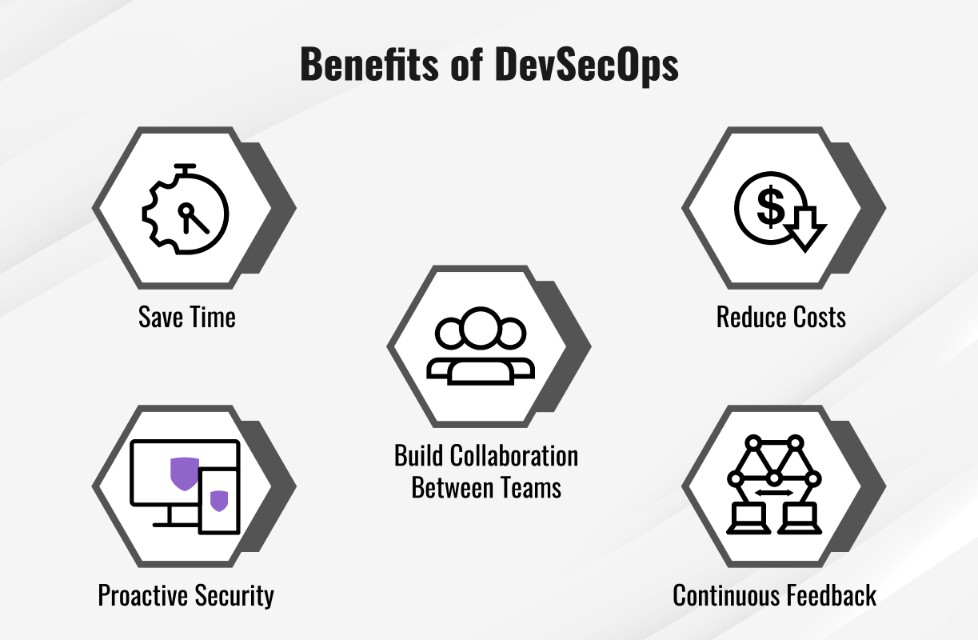
- Proactive Security: DevSecOps identifies and addresses security vulnerabilities early in the development process, reducing the risk of security breaches and data leaks.
- Risk Mitigation: By integrating security practices into development and operations, DevSecOps helps mitigate risks associated with cyberattacks and unauthorized access.
- Faster Remediation: DevSecOps enables quicker identification and remediation of security issues, leading to faster response times in addressing vulnerabilities.
- Compliance and Regulations: DevSecOps ensures that applications and systems meet compliance and regulatory requirements, avoiding potential legal and financial consequences.
- Reduced Costs: Addressing security issues early in the development process is more cost-effective than dealing with security breaches and their aftermath.
- Cultural Shift: DevSecOps promotes a cultural shift where security is everyone’s responsibility, fostering better collaboration between traditionally siloed teams.
- Enhanced Trust: Implementing strong security practices enhances customer and user trust in the organization’s products and services.
- Integrated Security: DevSecOps integrates security seamlessly into the development and deployment pipeline, avoiding the need for separate security reviews and assessments.
- Continuous Improvement: DevSecOps facilitates continuous improvement in security practices by providing feedback and insights throughout the lifecycle.
- Automated Compliance: By automating security checks and compliance assessments, DevSecOps helps maintain a consistent security posture.
- Timely Response: DevSecOps enables quicker responses to emerging security threats and vulnerabilities, reducing the window of exposure.
- Early Threat Detection: DevSecOps helps in early detection of security threats and potential attack vectors.
What is the feature of DevSecOps?
- Shift Left: DevSecOps emphasizes addressing security concerns early in the development process, aligning with the “shift left” approach.
- Automation: Similar to DevOps, DevSecOps employs automation to integrate security checks, vulnerability scanning, and compliance assessments into the pipeline.
- Continuous Security: DevSecOps promotes continuous security testing, monitoring, and feedback to ensure security remains a priority throughout the software lifecycle.
- Collaboration: DevSecOps fosters collaboration between development, operations, and security teams to address security concerns collectively and efficiently.
- Security as Code: DevSecOps integrates security practices into code development and infrastructure provisioning, treating security measures as integral components.
- Risk Assessment: DevSecOps assesses and prioritizes security risks, allowing for better allocation of resources and focus on critical vulnerabilities.
- Threat Intelligence: DevSecOps leverages threat intelligence data to identify potential attack vectors and vulnerabilities.
- Compliance Integration: DevSecOps ensures that security practices align with industry regulations and standards, enabling compliance.
- Vulnerability Management: DevSecOps involves continuous vulnerability management, including regular scanning and patching.
- Access Controls: DevSecOps enforces access controls and least privilege principles to minimize the attack surface.
- Incident Response: DevSecOps includes processes for rapid incident response in case of security breaches or incidents.
- Secure DevOps Toolchain: DevSecOps integrates security tools into the development and operations toolchain to ensure security measures are applied at every stage.
- Secure Deployment: DevSecOps ensures secure deployment of applications and systems, minimizing the risk of exposure.
- Security Training: DevSecOps encourages security training and awareness for all team members, promoting a security-conscious culture.
DevSecOps brings security into the core of the software development and deployment process, providing a holistic approach to maintaining a strong security posture while embracing the principles of DevOps. It offers numerous advantages by addressing security concerns early, fostering collaboration, and automating security practices.
What is the Top 10 Use cases of DevSecOps?
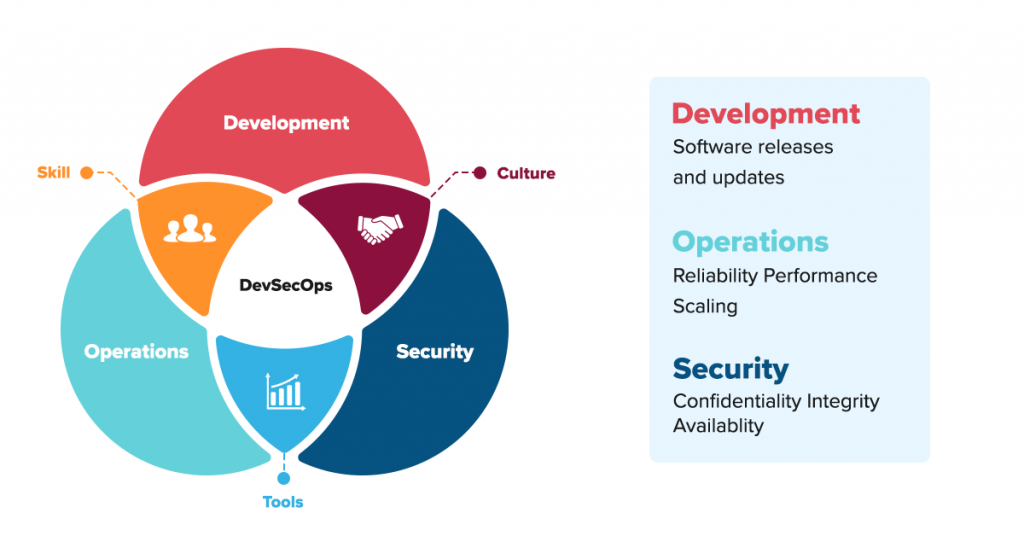
Here are some of the top 10 use cases of DevSecOps:
- Secure software development: DevSecOps can help organizations secure software development by integrating security into the entire software development lifecycle (SDLC). This includes activities such as threat modeling, vulnerability scanning, and code review.
- Automated security testing: DevSecOps can help organizations automate security testing by integrating security testing tools and processes into the SDLC. This can help organizations save time and resources, and it can also help them improve the quality of their security testing.
- Continuous monitoring: DevSecOps can help organizations continuously monitor their software for security vulnerabilities and threats. This can help organizations identify and fix security vulnerabilities early, before they can be exploited.
- DevSecOps training: DevSecOps can help organizations train their developers and other employees on security best practices. This can help organizations improve the security of their software development processes.
- DevSecOps tools: There are a number of DevSecOps tools available that can help organizations implement DevSecOps practices. These tools can help organizations automate security testing, continuous monitoring, and other security-related tasks.
- DevSecOps culture: DevSecOps is not just about tools and processes. It is also about creating a culture of security within an organization. This means that everyone in the organization, from developers to security engineers, needs to be aware of security risks and how to mitigate them.
- DevSecOps governance: DevSecOps should be governed by a set of policies and procedures that ensure that security is integrated into the SDLC. These policies and procedures should be reviewed and updated regularly to reflect changes in the organization’s security posture.
- DevSecOps compliance: DevSecOps should also be compliant with relevant security regulations. This means that organizations need to ensure that their DevSecOps practices meet the requirements of these regulations.
- DevSecOps risk management: DevSecOps should include a risk management process that identifies and mitigates security risks. This process should be based on the organization’s risk appetite and should be reviewed regularly to ensure that it is effective.
- DevSecOps communication: DevSecOps requires effective communication between developers, security engineers, and other stakeholders. This communication should be regular and transparent to ensure that everyone is aware of security risks and how to mitigate them.
How to Implement DevSecOps?
Here are the steps involved in implementing DevSecOps:
- Establish a DevSecOps team: The first step is to establish a DevSecOps team that includes developers, security engineers, and other stakeholders. This team will be responsible for implementing and maintaining the DevSecOps practices.
- Define your goals: The next step is to define your goals for DevSecOps. What do you want to achieve by implementing DevSecOps? Do you want to improve security, reduce costs, or improve efficiency?
- Choose the right tools and technologies: There are a number of DevSecOps tools and technologies available. Choose the tools and technologies that are right for your needs and that will help you achieve your goals.
- Develop a DevSecOps plan: Once you have chosen your tools and technologies, you need to develop a DevSecOps plan. This plan should outline your security goals, your security processes, and your security metrics.
- Implement the DevSecOps plan: The next step is to implement the DevSecOps plan. This involves integrating security into the SDLC and automating security testing and monitoring.
- Monitor and improve: The final step is to monitor and improve your DevSecOps practices. This involves collecting data on your security posture and using this data to improve your security processes.
Implementing DevSecOps can be a complex and challenging undertaking, but it can be very rewarding. By following these steps, you can implement DevSecOps and achieve your goals.
How to Get certified in DevSecOps?
- DevOpsSchool.com
- scmGalaxy.com
- BestDevOps.com
- Cotocus.com
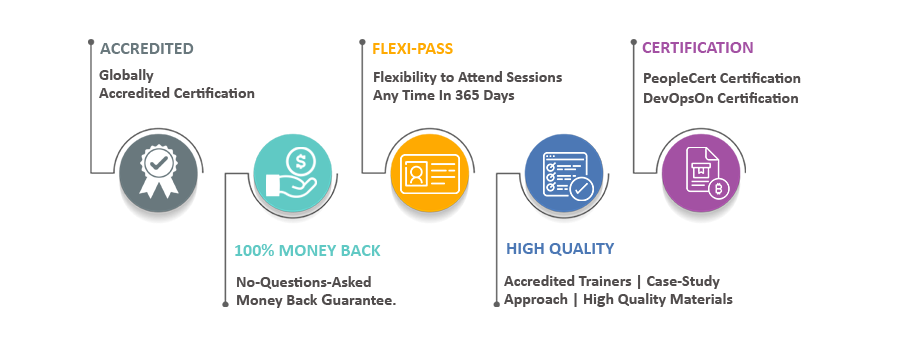
There are a few ways to get certified in DevSecOps. Here are some of the options:
- Take a course: There are many online and in-person courses available that teach the fundamentals of DevSecOps. These courses can help you learn the key concepts and principles of DevSecOps, as well as the tools and technologies used in this field.
- Get certified by a vendor: There are a number of vendors that offer DevSecOps certifications. These certifications can be a good way to demonstrate your skills and knowledge to potential employers.
- Contribute to an open source project: There are many open source projects that are related to DevSecOps. Contributing to these projects can help you learn about the practical application of DevSecOps concepts and technologies.
- Get a job in DevSecOps: One of the best ways to learn DevSecOps is to get a job in this field. This will give you the opportunity to work with experienced DevSecOps professionals and learn from them.
Some of the resources that you can consider for learning DevSecOps:
- Books and articles: There are many books and articles available that discuss DevSecOps. These resources can help you learn more about the history of DevSecOps, the different approaches to DevSecOps, and the challenges and opportunities that DevSecOps presents.
- Online courses: There are many online courses available that teach the fundamentals of DevSecOps. These courses can help you learn the key concepts and principles of DevSecOps, as well as the tools and technologies used in this field.
- Conferences and meetups: There are many conferences and meetups that focus on DevSecOps. These events can be a great way to learn about the latest trends in DevSecOps, network with other DevSecOps professionals, and get hands-on experience with DevSecOps tools and technologies.
- Get involved in open source projects: There are many open source projects that are related to DevSecOps. Getting involved in these projects can help you learn about the practical application of DevSecOps concepts and technologies.
- Contribute to a DevSecOps community: There are many online communities and forums where DevSecOps professionals discuss their work. Joining these communities can be a great way to learn from others, get help with your own work, and stay up-to-date on the latest developments in DevSecOps.
How to Learn DevSecOps?
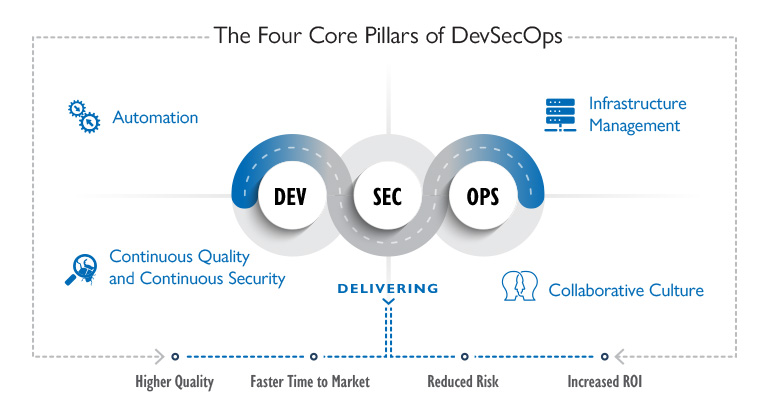
The best way to learn DevSecOps is to find a combination of methods that works for you. Some people prefer to take courses, while others prefer to read books and articles. Some people prefer to attend conferences and meetups, while others prefer to get involved in open source projects or contribute to DevSecOps communities. The most important thing is to find a way to learn that is engaging and that helps you retain the information.
Here are some additional tips for learning DevSecOps:
- Start with the basics: Before you dive into the more advanced topics, make sure you understand the basics of DevOps, security, and cloud computing.
- Find a mentor: A mentor can be a great way to learn DevSecOps. A mentor can provide assistance and support, and they can help you troubleshoot problems.
- Be patient: Learning DevSecOps takes time and effort. Don’t get discouraged if you don’t understand everything right away. Just keep learning and practicing, and you will eventually master the concepts and technologies of DevSecOps.

👤 About the Author
Ashwani is passionate about DevOps, DevSecOps, SRE, MLOps, and AiOps, with a strong drive to simplify and scale modern IT operations. Through continuous learning and sharing, Ashwani helps organizations and engineers adopt best practices for automation, security, reliability, and AI-driven operations.
🌐 Connect & Follow:
- Website: WizBrand.com
- Facebook: facebook.com/DevOpsSchool
- X (Twitter): x.com/DevOpsSchools
- LinkedIn: linkedin.com/company/devopsschool
- YouTube: youtube.com/@TheDevOpsSchool
- Instagram: instagram.com/devopsschool
- Quora: devopsschool.quora.com
- Email– contact@devopsschool.com

